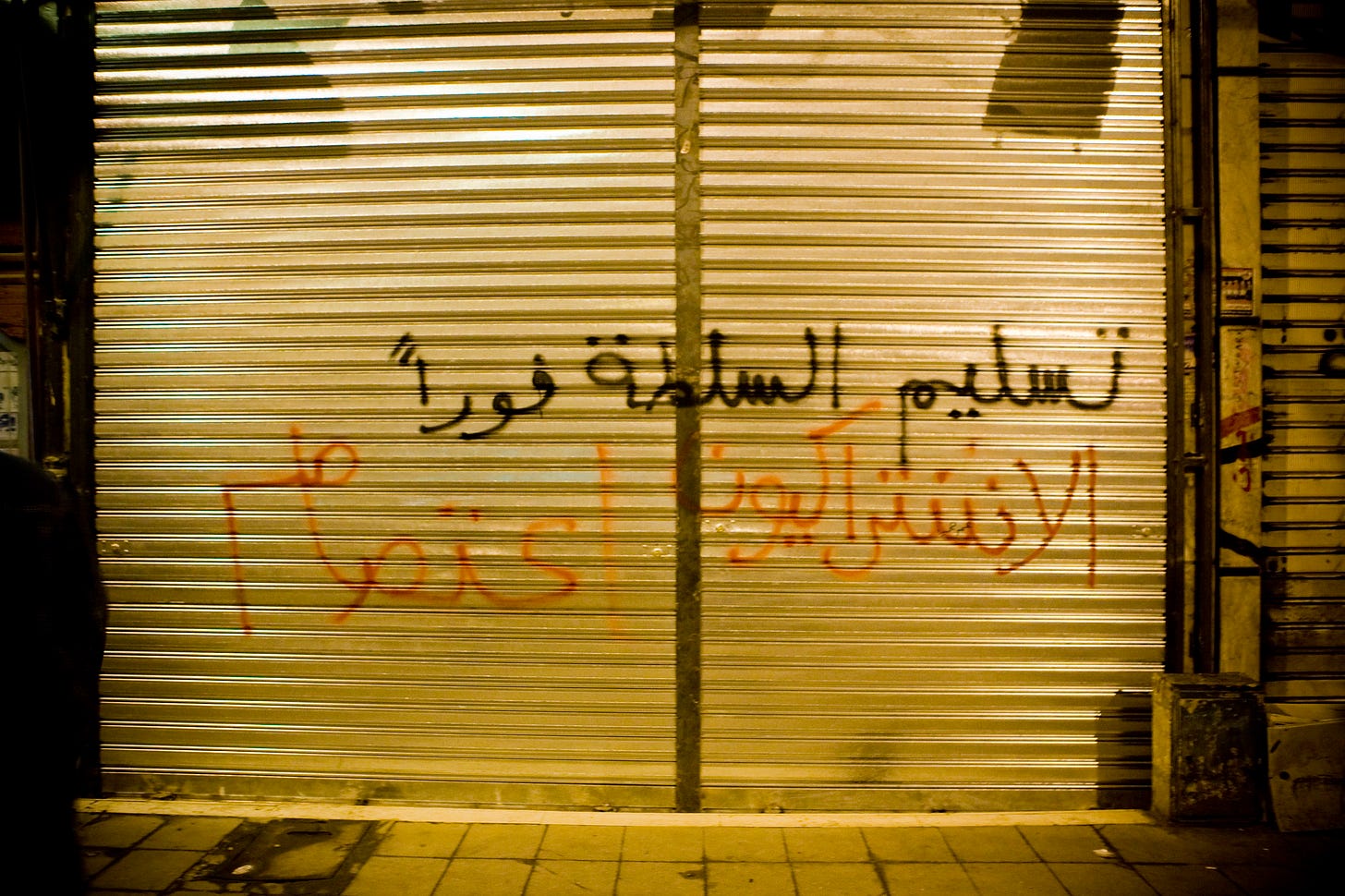
Anywhere I walked in the main streets and alleys of downtown Cairo, during the Mohamed Mahmoud Street Uprising, I stumbled on Revolutionary Socialists’ graffiti. This not only reflected the growing base of the movement, but also a complete adoption of the visualization of dissent strategy, by continuing to use any visual medium possible, in any space possible, to spread our propaganda and agitation.
A feature of early Islamic art, shared by some other civilizations, was Horror vacui (the fear of vacuum). I came across this concept for the first time in my life when I took an elective course on Islamic art and architecture, probably in my sophomore year in 1996. And I was fascinated by it, aesthetically, and later politically.
I treated (both online and offline) public space as an imaginary vacuum, and I wanted to fill this vacuum with Revolutionary Socialist content, by any means possible.
This vacuum could be your room wall, the school fence, your factory gate, a street billboard, a webpage empty sidebar, or any space available where a citizen might have visual contact. And it was our task to bombard this vacuum with visual propaganda and agitation, with strike news, anti-gentrification fights, photos of the mini uprisings in Mahalla and Borollos, videos of the general strikes and uprisings in other countries, anti-Mubarak graffiti writings and stencils... in pursuit of the domino effect.
In pursuit of the domino effect
The Egyptian revolution, which flared from early 2011 to mid-2013, is usually presented in the media (and some academic circles) as a “Facebook Revolution” or at least as one gigantic event that was ignited and organized online. The truth is slightly different.




